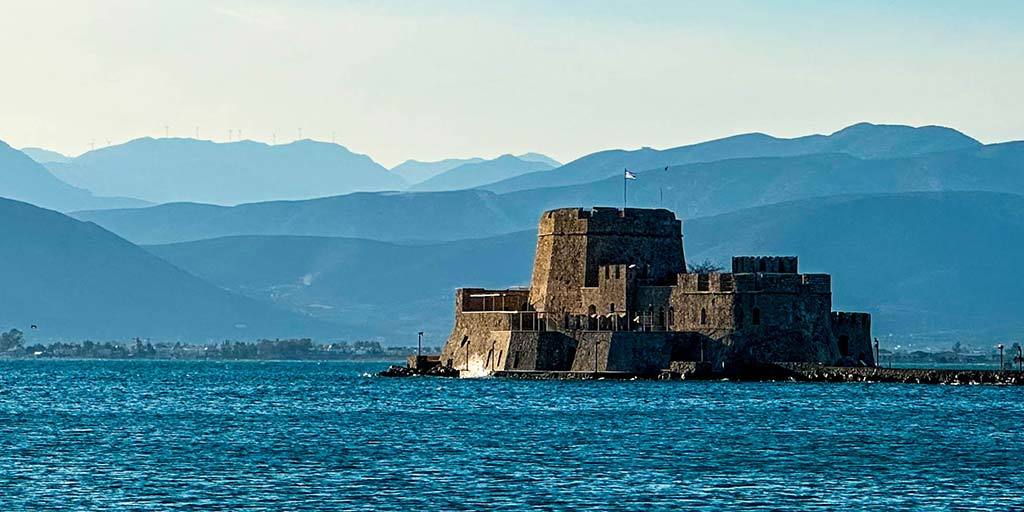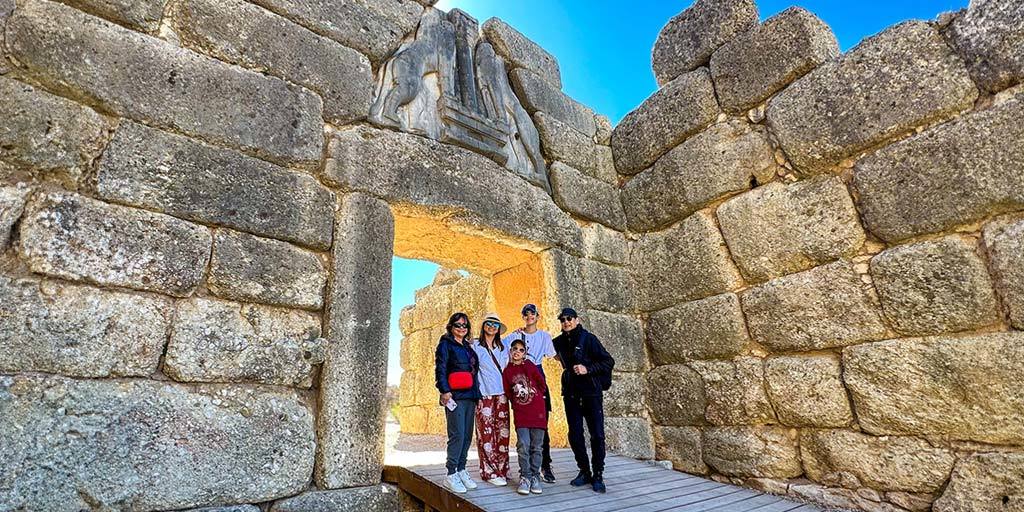Discover the heart of healing at Epidaurus, Greece. Explore the iconic theater, the Temple of Asklepios, and more. Uncover the secrets of ancient medicine and experience the magic of this UNESCO World Heritage Site. Insider tips for an unforgettable visit!
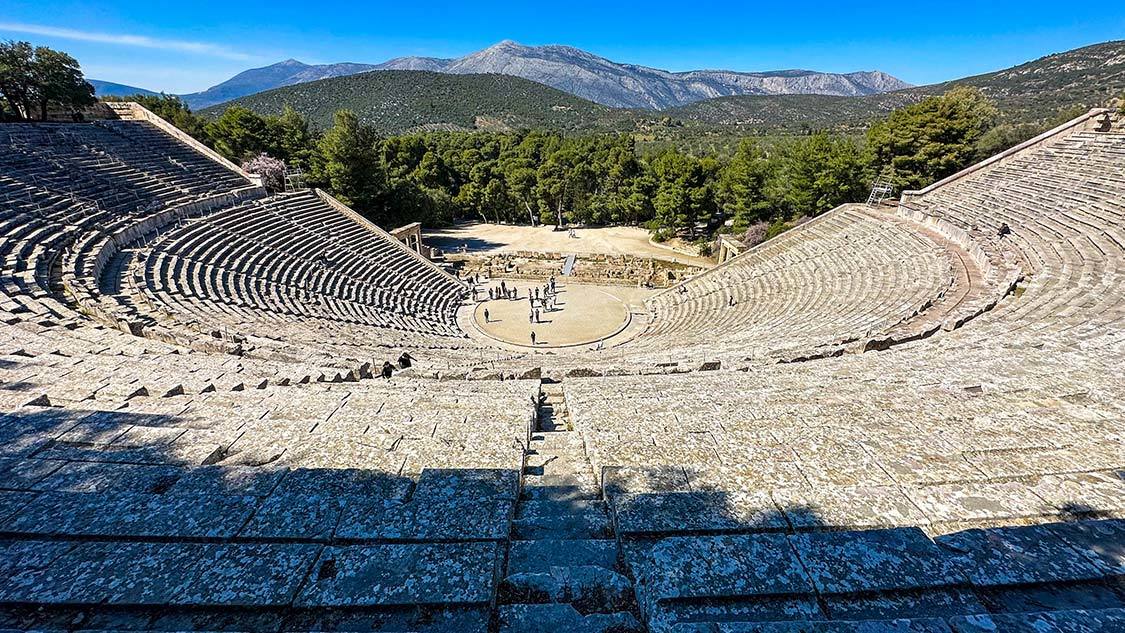
It was day one of our mainland Greek road trip. Athens was fading into the distance in my rearview mirror. The seaside town of Nafplio was my family’s ultimate destination for this leg of the journey. But this trip wasn’t a straight shot.
We made a stop in the ancient city of Mycenae, Agamemnon’s stomping ground, Clytemnestra’s revenge simmering in those ancient stones. Dylan, my nine-year-old, discovers the selfie. History meets duckface.
But we had one more detour before us. Epidaurus, where a theater with acoustics so sharp you could hear a pin drop in the nosebleeds lies. This theatrical masterpiece is the biggest draw of Epidaurus, and it’s a worthy one.
But my wife, Christina, was interested in Epidaurus for a much different reason. The art of science and medicine runs in her blood. And Epidaurus is the birthplace of modern medicine. Asclepius, the god of healing, held court here. Temples, baths, a stadium, all of it to promote healing. Including that wonderful theater.
Epidaurus was the Mayo Clinic of the ancient world. The sick and injured limped and crawled here, hoping for a miracle. And sometimes, they got one.
So, while the boys were racing up and down the marble stairs of the Epidaurus Theater, Christina was connecting the dots. From those ancient rituals to her mom’s late-night nursing shifts, it’s all connected. Humanity’s endless quest to cheat death, to ease pain and suffering. Epidaurus is more than a history lesson; it’s the beating heart of our modern medical world.
Our Visit To The Ruins Of Epidaurus, Greece
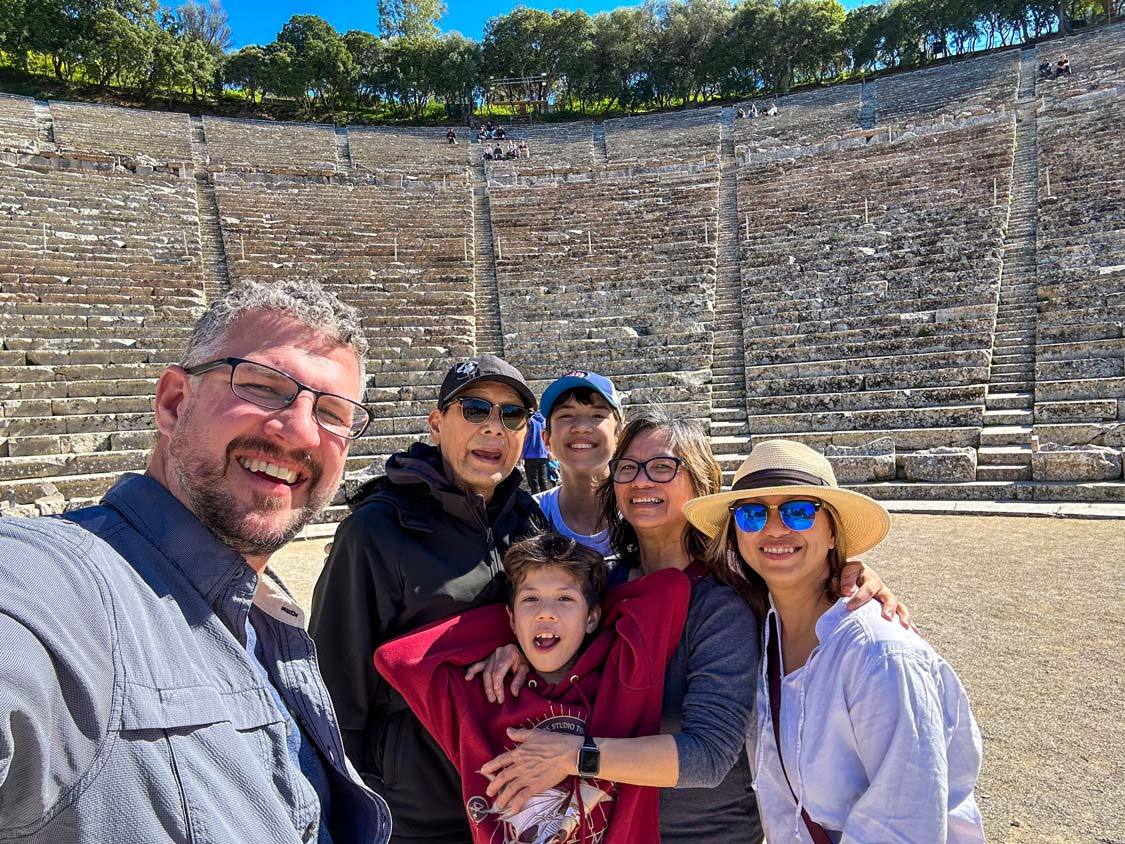
The March sun was perfect. The Peloponnese landscape is green and lush, with springs rising. We were pulling into Epidaurus during mid-afternoon. The parking lot was shockingly empty. That’s shoulder season for you. No bumper-to-bumper tour buses, no selfie stick jousting, just six road-weary travelers hungry for a taste of history.
Christina, my partner in crime, and her parents tagged along for our grand tour of the Greek mainland along with our two boys, Cohen and Dylan. We were all fueled up on Lonely Planet guidebooks and fresh gyros.
It was late in the day, and there was one thing in Epidaurus that we did not want to miss. The Grand Theater.
The Ancient Theater of Epidaurus
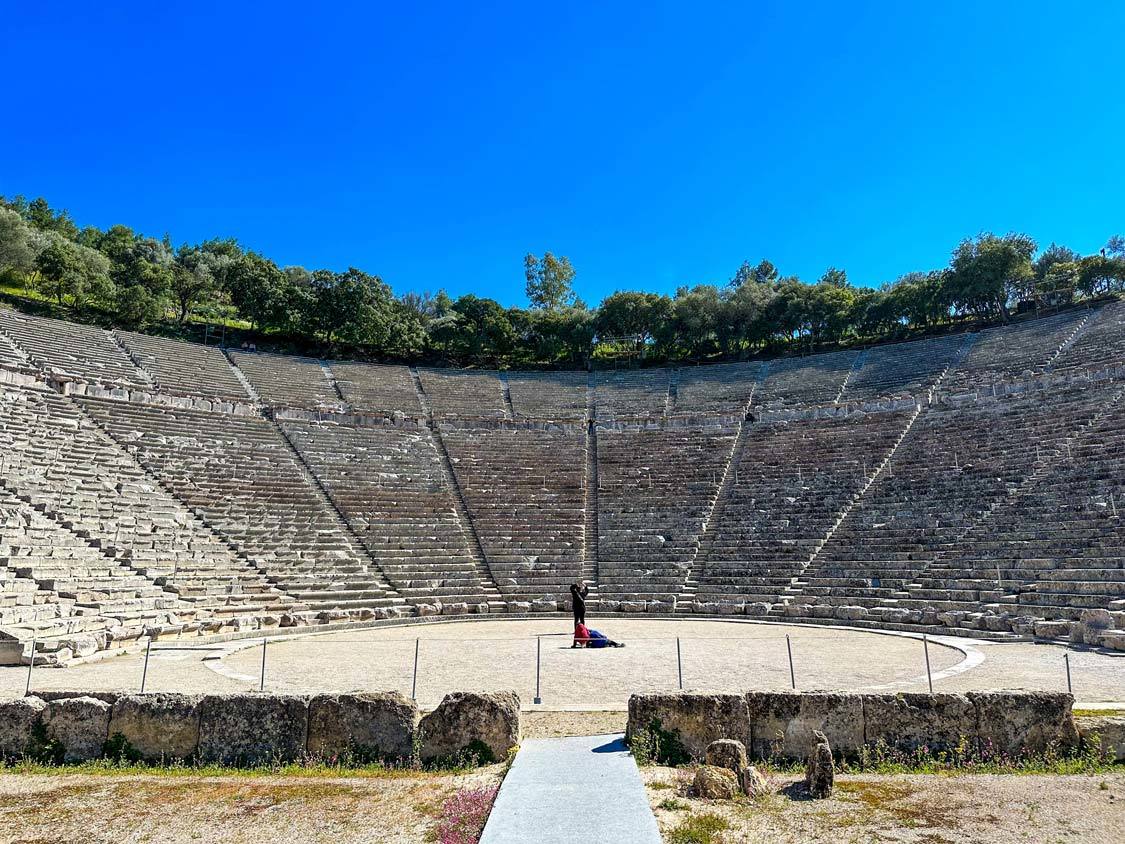
Sometime around 400 BC. Polykleitos the Younger, an emerging rock star of the Greek architectural scene, had a big dream. A theater to hold 15,000 souls, every one of them getting the full sonic experience. No muffled whispers, no straining to hear the chorus. So he set to work.
The result of his hard work was the Epidaurus Theater: a masterpiece of acoustics, a symphony set in stone. Fast forward 2,400 years, and this wonder of engineering is still hosting gigs. That’s how good this place is.
The theater of Epidaurus isn’t just a relic; it’s a living example of the healing power of the arts. UNESCO stamped it as one of the organization’s coveted World Heritage Sites. But experiencing this theater for ourselves, the real proof was in the goosebumps that erupted when a young woman’s unamplified voice filled the whole theater, causing every one of us to stop in our tracks at rapt attention.
There’s more to the story of the Epidaurus Theater than just entertainment, though. The city of Epidaurus, back in the day, was on the cutting edge of medicine. This theater was all part of the cure: laughter, music, the shared experience – all of it was and is still medicine for the soul.
While Christina and her parents soaked in the sounds of a stranger’s impromptu performance, the boys and I did what we always do: climb—the top row with vertigo-inducing views. From the city of Ephesus to here, this is our ritual in every ancient theater we visit.
Up here, it’s like we can feel the history and energy of the thousands who had sat here before us to enjoy the show. The past, the present, and the enduring power of human connection. Now, that’s a show worth the price of admission.
The Temple of Asklepios
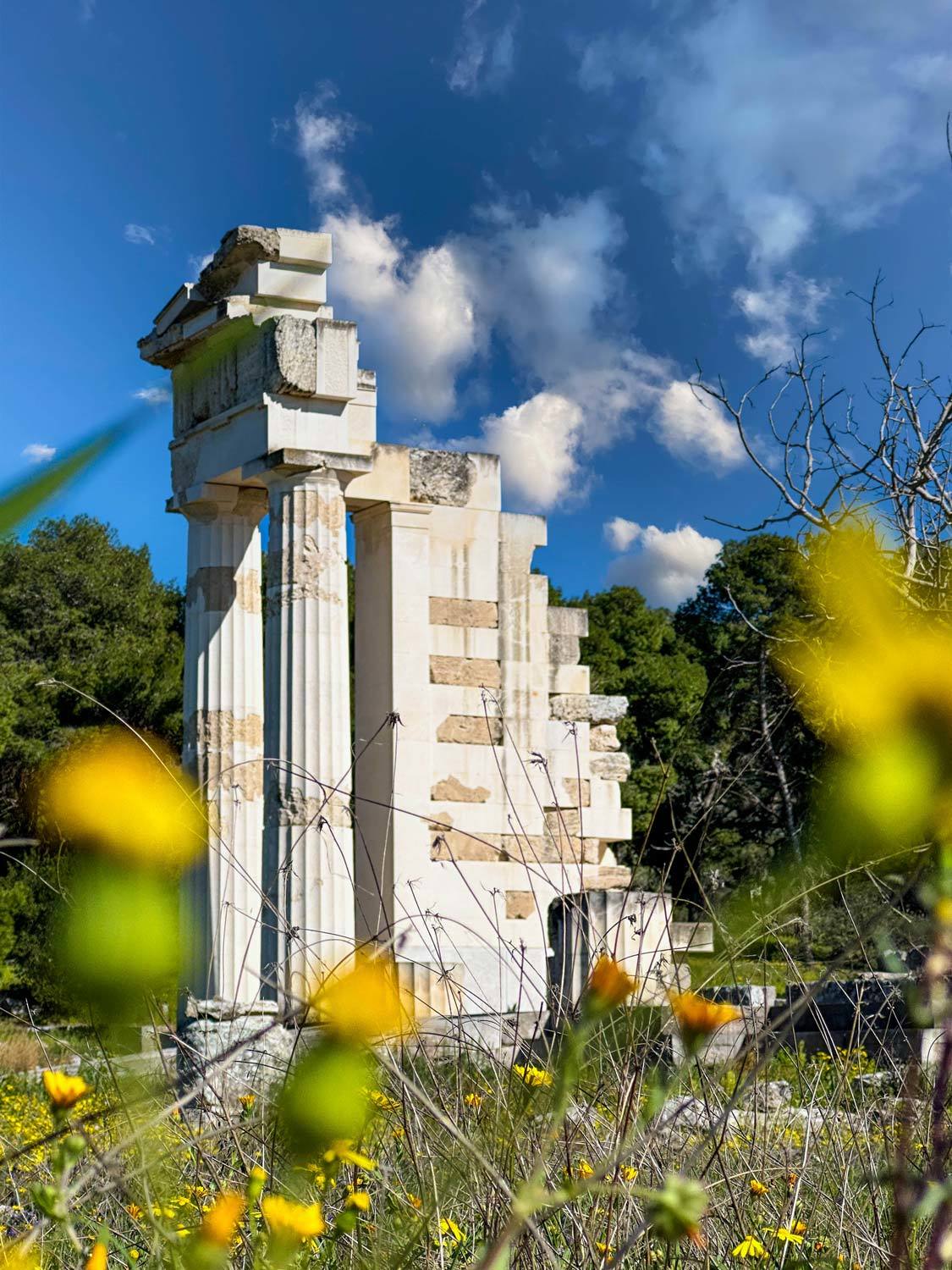
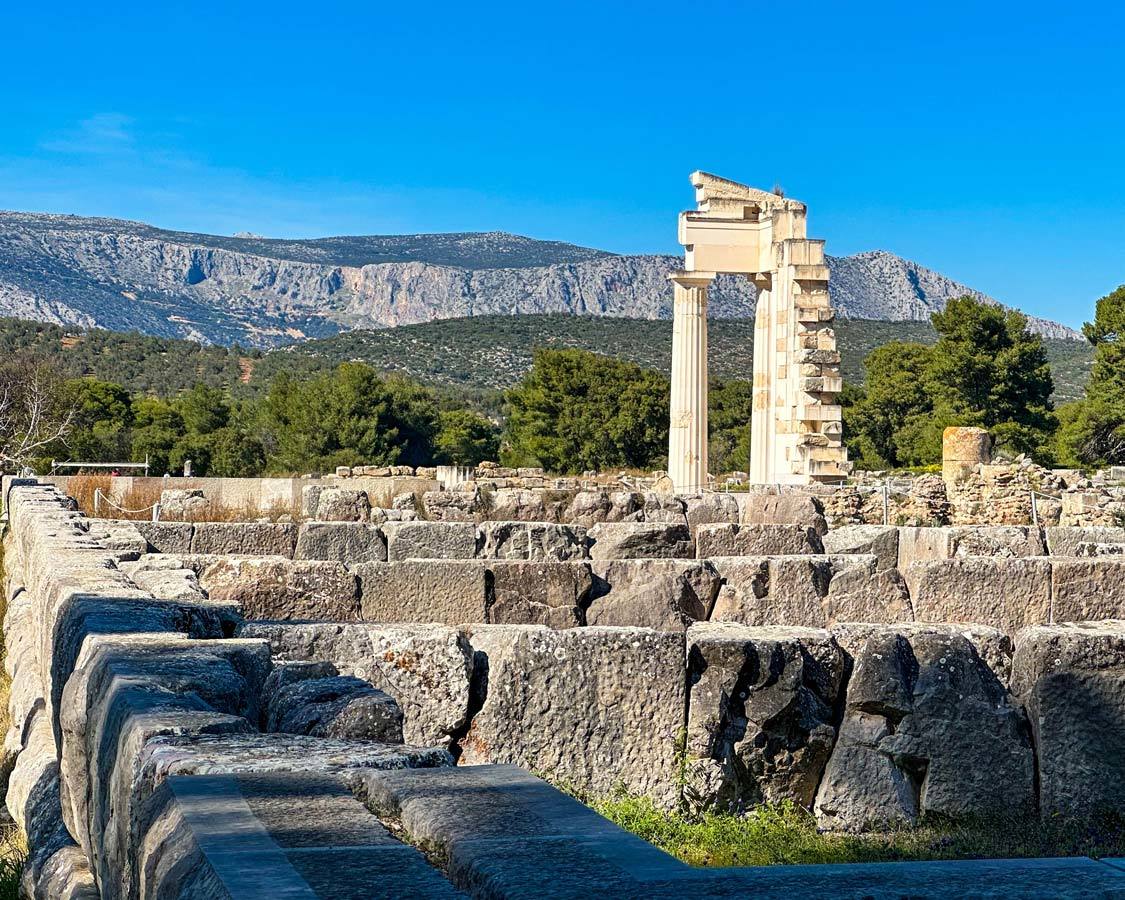
The Epidaurus Theater is a showstopper. Acoustics that’ll make a choirboy sound like Pavarotti paired with views that could launch a thousand postcards. But Epidaurus is no one-hit wonder. This whole city is bathed in history, scenery, and secrets that lurk around every corner.
We only had a few hours in Epidaurus, the mid-afternoon sunlight slowly sinking toward the horizon. Not enough time to see everything, but enough to scratch the surface of all of the things to see in Epidaurus.
Our next stop would be the Temple of Asclepios, ground zero for Epidaurus’ healing magic. The handful of columns and a glimpse of a facade are all that’s left, but they stand proudly in a field of wildflowers, the Lourdes of its day.
People came from all over the empire to the Temple of Asklepios in the hopes that the Greek God of Healing would work his magic on them. And sometimes, it worked.
Were they miracles? Or maybe it was those Epidaurian doctors, way ahead of their time, stitching the injured and brewing medicines to heal the body while using nature, the arts, and comforting words to heal the soul.
However you want to look at it, this temple got my attention. A proud monolith that stands amongst a field of fallen columns. I took a moment here to breathe. In the air was a sense of hope, desperation, and the sheer human will to survive.
Epidaurus Stadium
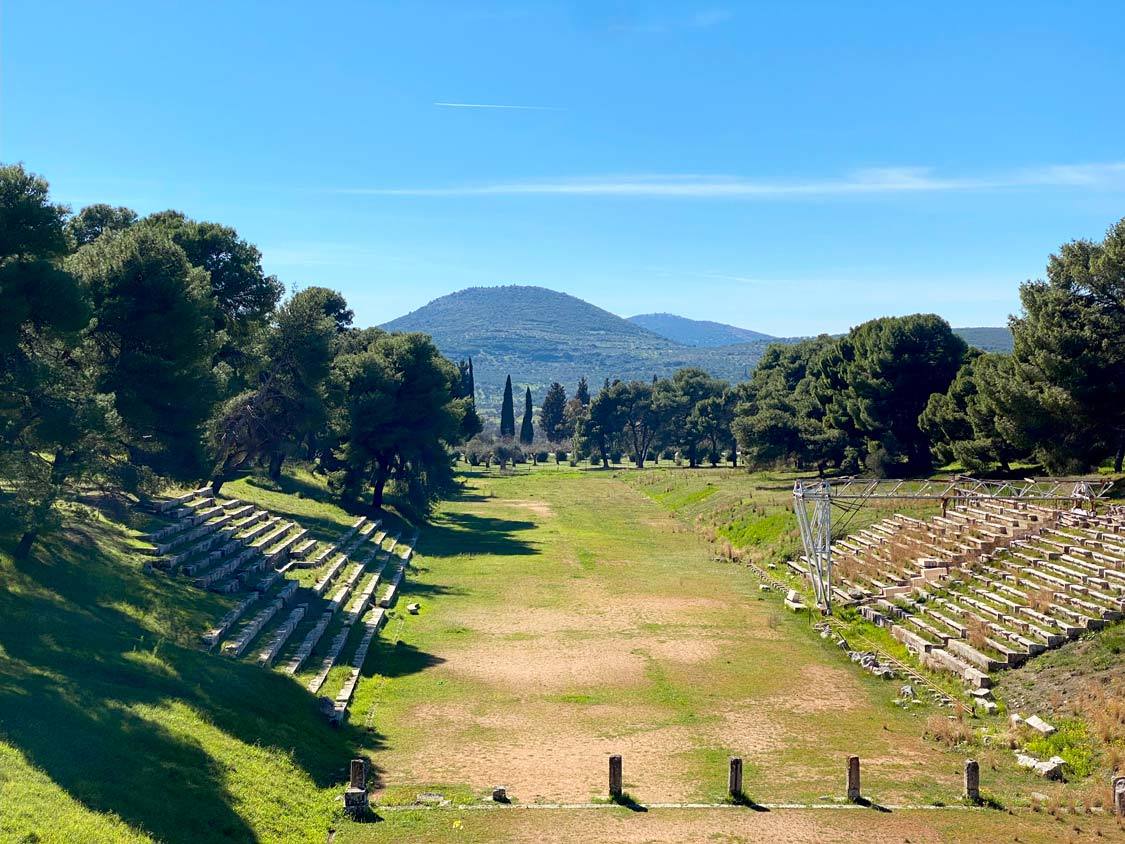
The Epidaurus Stadium was where the locals let loose. It was the scene for athletic games, sure, on a scale quite a bit smaller than Olympia, sure. But the stadium’s main event was the Asklepios festival. This place has seen some action.
By the fifth century BC, they were already writing about these events. Imagine the energy, the roar of the crowd, the smell of sweat and roasting food mingling with incense.
Temple of Artemis
The Temple of Artemis is small and elegant. A tribute to Artemis, the Greek Goddess of Childbirth… makes you think, doesn’t it?
Having kids changes everything. One minute, you’re a couple backpacking through Europe; the next minute, you’re navigating a tiny stroller across bumpy cobblestones in Portugal, looking for a good spot to stop for nap time.
But kids can open doors that you never knew existed. They have this ability to turn the mundane into the magical and help you see the world with fresh eyes.
Christina and I took a moment at this temple, reflecting on our own family travel adventures. We imagined those who came to pay homage here. Maybe they were anxious mothers-to-be who came to pray, hoping for a safe delivery. Or maybe it was a place of celebration, a thank you to the goddess Artemis for a new life brought into the world.
Either way, it’s a reminder that even in the ancient world, family was everything. The drive to protect, to nurture, to pass on something bigger than yourself.
That’s what family travel is about, too. Creating those shared moments, those stories that’ll be passed down, shaping the next generation of adventurers. Epidaurus, with its temples and theaters, wasn’t just about the past. It’s about the future Christina and I are building for our kids, one messy, beautiful step at a time.
The Stoa of Abaton
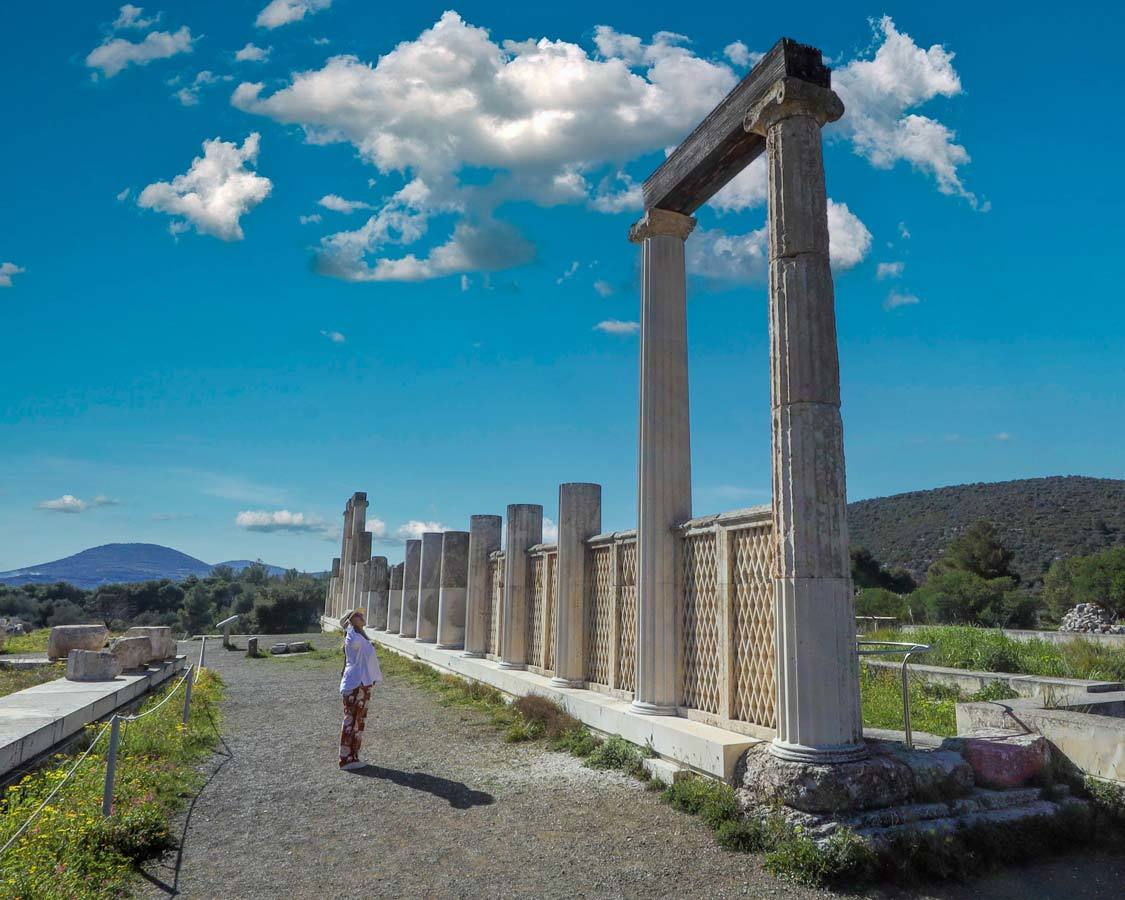
The Stoa of Abaton is where the real action went down in Epidaurus. Forget your fancy hospitals, your sterile waiting rooms of the modern medical world. This was the epicenter of healing, dedicated to Asclepios himself, the Greek god who could mend a broken bone or banish a fever with a wave of his divine hand.
Pilgrims, sick and desperate, would shuffle into this long, columned hallway. It’s believed that they would read the inscriptions on the walls, words of hope and miracles. Then, they would take a dip in a sacred well, washing away their earthly woes. Finally, they’d lay down on the cold stone floor, hearts pounding, waiting for a dream of Asclepios himself. They believed that he’d visit them in their sleep, offering a cure, a vision, a glimpse into the mysteries of the human body.
Sanctuary of the Egyptian Gods
Talk about a culture clash! By the second century CE, the Romans were running the show, but they were still dabbling in the exotic. Isis, Osiris, even Attis – these weren’t your typical Roman deities. It’s like finding a Pad Thai restaurant in the heart of Little Italy.
This sanctuary is a testament to the empire’s appetite for the foreign, the mysterious. Incense smoke mingled with the scent of olive oil, priests chanting in a language that’d make a legionnaire scratch his head.
The Gods of the day ran the gamut of Greek, Roman, and Egyptian. Anything that might give the sick an edge over the Grim Reaper.
Altar of Asklepios
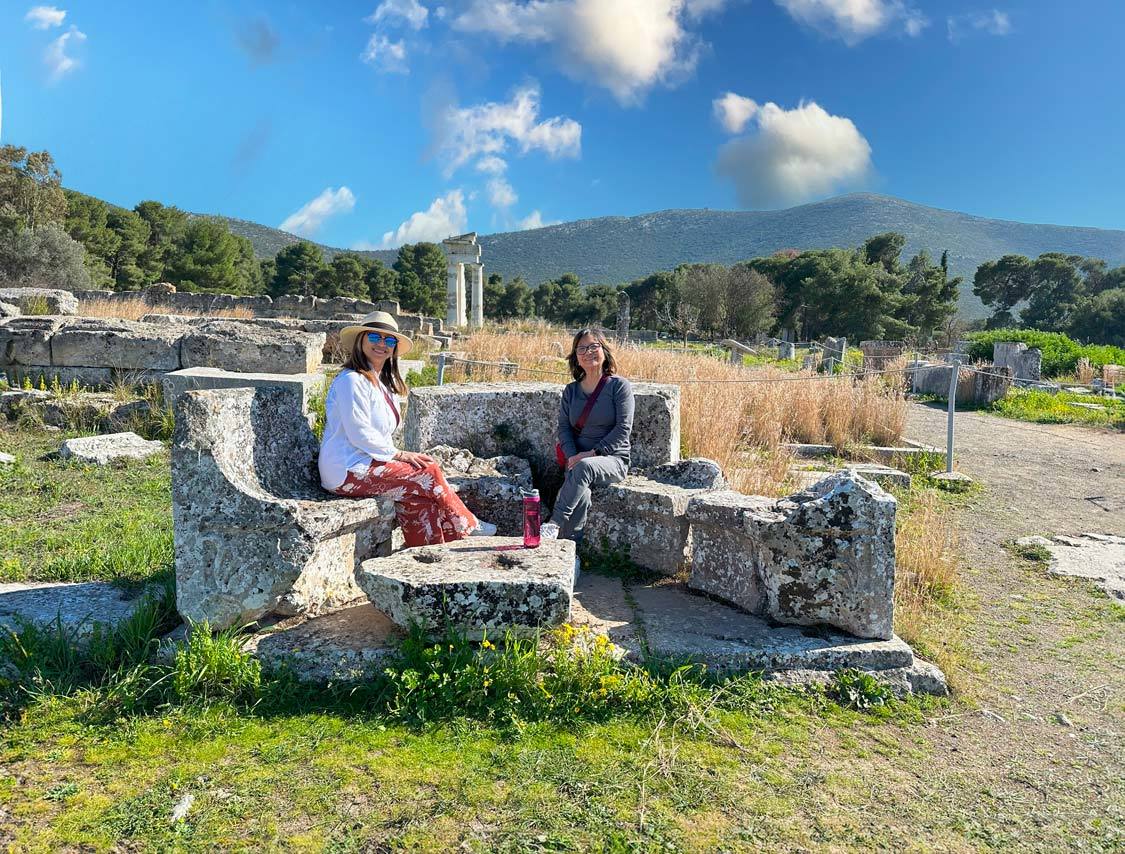
There were no antibiotics, MRIs, or CAT scans in ancient Epidaurus. The dance of life and death relied on basic medical knowledge, much of it developed right here in the city, and a LOT of hope. That’s where the Altar of Asklepios came into play.
Here, sacrifices were made to the Gods, oxen, goats, and sheep, mixed with a lot of prayer. A bargain with the fates, to cling to this fragile thing called life.
Epidaurus Museum
Statues, pottery, surgical tools – these aren’t simply artifacts. They’re stories of generations of healing. Each piece has a label and a little backstory. However, the Epidaurus Museum is more than just facts and dates. It’s a way to connect the dots and understand how these people lived, loved, and died.
It’s also a reality check. That, even thousands of years later, we humans are still grappling with the same questions, the same hopes and fears.
Tips For Visiting Epidaurus
Epidaurus isn’t a dusty pitstop on your Peloponnese road trip. This place breathes history and whispers tales of gods and mortals, of healing and heartbreak. Here’s the real deal on how to experience Epidaurius like you mean it:
- Timing is Key: Summer here is a scorcher. Tourists can be packed in like sardines, fighting for the small amount of shade sprinkled throughout the archaeological site. If you can, come in the spring or fall when the sun’s got a gentler touch and the crowds thin out.
- Ditch the Flip-Flops: This isn’t a beach stroll. We’re talking ancient ruins, uneven ground, and stones polished smooth by centuries of footsteps. Wear grippy hiking shoes or runners that can handle the terrain, or your feet will be cursing you louder than a disgruntled oracle.
- Respect the Sun: Even in the off-season, that Greek sun isn’t messing around. Sunscreen, hat, sunglasses – your holy trinity of protection. Trust me, you don’t want to be nursing a sunburn while exploring the birthplace of medicine. You can find my top recommended sunscreens here.
- Pack a Feast: There’s a small cafe in Epidaurus, but it’s small and can get busy. Bring your own picnic. Fresh fruit, crusty bread, maybe some local cheese and olives. Fuel for the body, sustenance for the soul.
- Take it Slow: Visiting Epidaurus isn’t a race. Give yourself time to wander, to get lost in the maze of ruins, to imagine the roar of the crowd in the ancient theater. This place deserves your full attention and your respect. Don’t just see it, feel it.
Bonus: Visiting Epidaurus in the summertime? Check ahead and see if you can catch a show in the Ancient Theater. Ancient Greeks knew how to party, and trust me, you haven’t lived till you’ve seen a tragedy unfold under the stars, the same way audiences did thousands of years ago. That’s a memory that’ll stick with you longer than any tan line.
Enjoy Your Time In Epidaurus, Greece
Mark my words: Epidaurus isn’t just another pile of old rocks. It’s a pilgrimage, a journey back to a time when gods walked among men, and healing wasn’t just about pills and potions. It was a blast to explore, and the kids and I walked away from the adventure with even more questions and fascination than we had coming in.
But this was just one small part of our travels in Greece. After spending the night in Nafplio, we were off to one of the most mystical landscapes imaginable, something that would end in a panicked escape from the hills of Mystras.
You May Also Like To Read:

